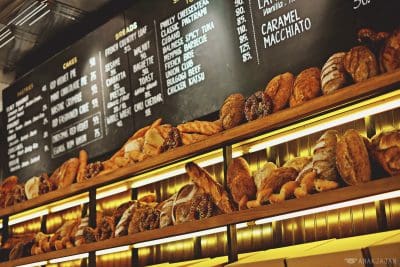GETTING more Australian wheat into premium Indonesian bakeries could increase value for Australian growers, as our nearest neighbours continue to eat more and more bread and other bakery items.

The offering at Union Deli in Jakarta exemplifies the expanding demand for milling wheat in Indonesia. Photo: Anakjajan
New AEGIC analysis has confirmed that consumption of baked goods in Indonesia is growing strongly.
AEGIC chief economist Ross Kingwell said Australian wheat could capitalise on this trend by finding a place in the small-to-medium bakery sector.
“Small-to-medium enterprises produce more than two-thirds of all baked goods in Indonesia,” Professor Kingwill said.
“These bakeries can use flour blends which incorporate mid-protein wheat, which Australia already produces in large quantities.
“In the short term, this segment is the most realistic opportunity for getting more Australian wheat into Indonesian baking.”
Professor Kingwell said in the longer term, large-scale industrial bakeries in Indonesia could be another opportunity for Australian wheat.
North American competition
North American wheat is currently dominant in the Indonesian bread sector, especially in large-scale industrial bakeries.
“While Australian wheat is viewed in Indonesia as the gold standard for noodles, this is not the case for bread.”
“Indonesian millers prefer high protein American and Canadian wheat for bread flour, especially in large-scale industrial bakeries, and Australia doesn’t currently have a direct competitive advantage here.
“Competing in this segment would involve a long-term, coordinated effort for Australia to be able to breed, classify, grow, and supply high protein wheat for Indonesian bread.”
Professor Kingwell said overall, the Australian industry should target the market segments most likely to use Australian wheat, and within the Indonesian baking sector, this means small-to-medium enterprises.
“We need to keep in mind that the Indonesian baked goods market needs to be compared against other market segments and geographic markets,” he said.
“The resources needed for breeding and market development are finite, while markets with likely upside are numerous.”
Professor Kingwell said capitalising on the Indonesian baked goods market would involve ongoing technical engagement and training to help customers understand and get the most out of Australian wheat.
Source: AEGIC

HAVE YOUR SAY